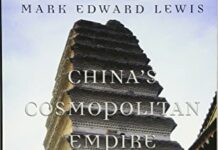
Ebook Info
- Published: 2010
- Number of pages: 336 pages
- Format: PDF
- File Size: 3.74 MB
- Authors: Mark Edward Lewis
Description
In 221 BC, the First Emperor of Qin unified the lands that would become the heart of a Chinese empire. Though forged by conquest, this vast domain depended for its political survival on a fundamental reshaping of Chinese culture. With this informative book, we are present at the creation of an ancient imperial order whose major features would endure for two millennia.The Qin and Han constitute the “classical period” of Chinese history―a role played by the Greeks and Romans in the West. Mark Edward Lewis highlights the key challenges faced by the court officials and scholars who set about governing an empire of such scale and diversity of peoples. He traces the drastic measures taken to transcend, without eliminating, these regional differences: the invention of the emperor as the divine embodiment of the state; the establishment of a common script for communication and a state-sponsored canon for the propagation of Confucian ideals; the flourishing of the great families, whose domination of local society rested on wealth, landholding, and elaborate kinship structures; the demilitarization of the interior; and the impact of non-Chinese warrior-nomads in setting the boundaries of an emerging Chinese identity.The first of a six-volume series on the history of imperial China, The Early Chinese Empires illuminates many formative events in China’s long history of imperialism―events whose residual influence can still be discerned today.
User’s Reviews
Editorial Reviews: Review “As the first volume in the History of Imperial China, The Early Chinese Empires sets an authoritative, reliable tone that bodes well for this important new series. The book meets a high standard of historical accuracy and covers an impressively broad range of topics. Accessible to a wide audience, it will appeal to anyone interested in the foundations of the Chinese imperial tradition.”―Victor H. Mair, University of Pennsylvania“Inaugurating a six-volume series on the history of imperial China, this volume holds that characteristics of the first Chinese empire broadly endured for the succeeding 2,000 years…[Those] planning to acquire the entire series mustn’t omit Lewis’ solid foundation.”―Gilbert Taylor, Booklist“The standard multivolume history of China has long been the magisterial, exhaustive Cambridge History of China. Now Harvard University Press has announced a six-volume series that will cover the rise, development, and decline of dynastic China from the second century B.C.E. through the early 20th century in an up-to-date, compact, and approachable way. This opening volume by Lewis foretells that the series will become the new gold standard, as the author explains in clear and telling detail how the Qin dynasty ruthlessly defeated a succession of rivals to unify briefly what we now call China in 221 B.C.E. We then see how the succeeding Han dynasty (206 B.C.E.-220 C.E.) combined social engineering and political savvy to institutionalize control and form a ‘classical’ era parallel to the Greeks and Romans in the West. Han imperial structures, including religion, literature, and law, were quite different from what evolved out of them, but Lewis convincingly argues that later societies cannot be understood without understanding this classical foundation.”―Charles W. Hayford, Library Journal (starred review)“Mark Lewis’s mind-opening and readable book reminds us of the enduring but changing realities of China.”―Jonathan Mirsky, Times Literary Supplement“Early Chinese Empires is a brilliant example of nuanced, responsible popularization. As the first in a series of six volumes that will cover all of Imperial China, it sets a very high standard.”―Grant Hardy, The Historian“This series on China, brilliantly overseen by Timothy Brook, is a credit to Harvard University Press. Above all, it encourages us to think of China in different ways.”―Jonathan Mirsky, Literary Review About the Author Mark Edward Lewis is Kwoh-Ting Li Professor in Chinese Culture at Stanford University.Timothy Brook is Professor of History and Republic of China Chair at the University of British Columbia.
Reviews from Amazon users which were colected at the time this book was published on the website:
⭐Mark Edward Lewis inaugurates Harvard University’s ‘History of Imperial China’ series in this first installment. The major themes are set, and the format will remain mostly consistent over six volumes and three authors. Generally 100 pages are dedicated to political and military history, and 200 to urban and rural life, foreigners, family, religion, literature and law. The aim is to synthesize these elements, rather than to provide discrete essays. Major dynasties (such as Han, Tang and Ming) are paired with pivotal ones (such as Qin, Sui and Yuan). Minor dynasties are glossed over in favor of brevity.Lewis begins with an inevitable comparison of the Han empire with the Roman empire, which co-existed during 27 BC to 229 AD. He sees a distinction in the Chinese empire’s ‘ability to reform itself again and again after periods of disunity’ due to a ‘reshaping of Chinese culture by the earliest dynasties, the Qin and the Han’. It is true that all later and even foreign dynasties (such as the Yuan and Qing) would adopt Han culture as their own. Lewis shows how future dynasties ‘cannot be understood without a grasp of China’s first period of unification’, as Western culture cannot without the Greco-Roman periods.The five major features of the Chinese classical period are defined by Lewis as: ‘regional cultures transcended but not eradicated’, a ‘political structure centered on the emperor’, a ‘state-sponsored script and literary canon’, ‘military activities assigned to people on the frontier’ and ‘wealthy families in the countryside who maintained order’. This last principle differed from Roman patricians in that the great Han families were not large landowners deriving wealth from tenant or slave workers. They were groups of relatives and associates who formed leagues able to augment the power of the state.The Han city had outer defense walls and an inner walled forbidden city. ‘Unlike Rome, where the ruler showed himself to the people, the ruler in China derived status from being invisible’, writes Lewis. While Rome had Latin and Greek for law and science, the Qin invented non-alphabetic symbols so that different languages could share the same written words. ‘Pliny complained that all of Rome’s gold was flowing east to pay for silk’. Silk was used by China to pay for nomadic military confederates. ‘Whereas the stone ruins of Rome survived, the capitals of China burned when a new dynasty took control.’Lewis, as with his other two volumes in the series, is consummately erudite. When he discusses the material in the topical sections, he provides readings from the ancient sources his text is based on. This is a cut above mere footnotes, engaging the reader in his process of interpretation, and revealing the lens the ancient past is being viewed with. Usually this is ’through a glass darkly’, but happily the Chinese (like the Romans) had a great wealth of historical and other literature to draw from. He is a generalist in Chinese history, equally at home with religion and arts as with war and law. A tour de force.
⭐Interesting though too short on actual history and long on fairly arcane aspects of these two early dynasties. Although there are several maps, none of the images from the print edition are included, instead the images are replaced with the ridiculous suggestion: “to view this image, refer to the print edition of this title”. Kindle books that do not include original images or maps should make this clear in the description.
⭐This isn’t light reading for most people, but I wanted some background to for a more thorough appreciation of some literature I’ve been reading. This is fascinating and accessible as a history source, and I’ll be purchasing the others in the series.
⭐I became interested in early Chinese history while watching a TV fictional series set during this period. I wanted to know what was fiction and what was historically accurate. This book filled the bill.
⭐A fascinating read but the Kindle version lacks the illustrations. Perhaps better to buy a paper version. Would be good if that information were included prominently in the description of the Kindle version so we might make an informed choice. 5 stars for the history, 1 star for the poor implementation and documentation of the Kindle Version.
⭐Another very workmanlike book by Mark lewis on Chinese history. A good introduction which will equip you for further, more detailed exploration
⭐What I like most about the book is that it has updated my knowledge of that particular period of Chinese history. I also appreciate the writer’s analysis from different perspectives, which makes reading about history a joy.
⭐Positive: An excellent introduction to Chinese history. You can still see the Qin/Han imprint on Communist China today with the CCCP’s emphasis on social stability and rigid focus on the supremacy of the state.Negative: Many illustrations left out of the Kindle edition.Recommendation: Watch ‘The Qin Empire: Alliance’ on Netflix for a visual treat of this period of history.
⭐A detailed description of the Qin and Han dynasties given in ten chapters, each dealing with a particular topic, such as language, law, religion, etc. Mark E. Lewis discusses crucial points in the development of the first Chinese empire and gives reasons why some things changed in the transition from the Qin to the Han and why others remained the same. Overall a very nice book, although it would benefit immensely from more and better (chronological) maps in order to give a graphic representation of provinces, geographical data, army movements and so on. Hence the 4 stars.
⭐Very good overview of the Qin and Han Empires by a first-rate historian. It’s arranged thematically (war, cities, rural society, religion etc etc) – there is no single narrative of the period so it might not be suitable for someone completely new to the subject. There is much interesting detail crammed into quite a short book – around 260 pages of text. There are good maps but regrettably the illustrations (black and white) are muzzy and indistinct, otherwise I would have given 5 stars.
⭐Intensly detailed to the beginnings of China as we know it today. The research must of been astronomical and is a must to livers of ancient china
⭐This is an incomplete history book.The introduction is not detailed enough.
⭐Great fascinating read
Keywords
Free Download The Early Chinese Empires: Qin and Han (History of Imperial China) in PDF format
The Early Chinese Empires: Qin and Han (History of Imperial China) PDF Free Download
Download The Early Chinese Empires: Qin and Han (History of Imperial China) 2010 PDF Free
The Early Chinese Empires: Qin and Han (History of Imperial China) 2010 PDF Free Download
Download The Early Chinese Empires: Qin and Han (History of Imperial China) PDF
Free Download Ebook The Early Chinese Empires: Qin and Han (History of Imperial China)

